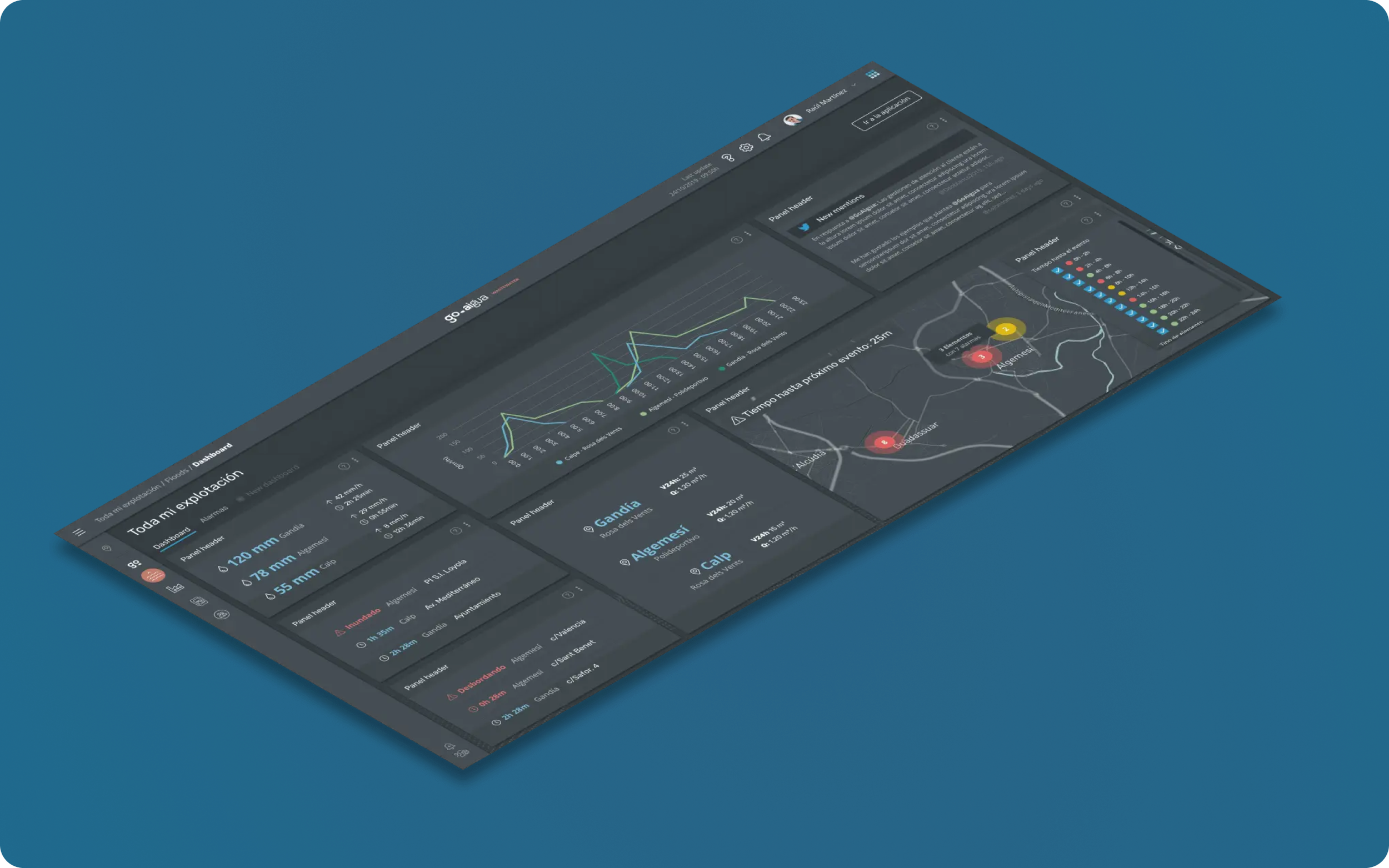Redesigning the UX of GoAigua’s Smart Water Platform
GoAigua is a smart water platform that integrates data from multiple sources to optimize water cycle management across cities and utilities. The platform enables real-time monitoring, decision-making, and automation for operations such as consumption, leakage detection, asset performance, and water quality.
It is used by technical teams in both public and private utilities to manage large infrastructures and respond to issues quickly and efficiently.
Product Designer , SaaS, Smart Utilities, Data Visualization
Period: 2018-2019
Design Challenge
How could we unify multiple dashboards and data-heavy modules into a coherent, user-friendly experience—without compromising the depth of information?
GoAigua’s platform had grown organically, resulting in fragmented UX, inconsistent interfaces, and steep learning curves. As the product evolved, we needed to redesign the system from the ground up, making it more scalable, efficient, and visually unified—while still enabling deep, technical monitoring across the entire water network.
My Role & Impact
As a Product Designer in a multidisciplinary team, I led the redesign of core platform modules and collaborated directly with product managers, engineers, and water utility experts.
My scope included:
UX and UI for the main monitoring and control dashboard
Visual design system for multi-module consistency
Data visualization for time-series, events, and predictive analytics
User workflows for issue detection and resolution
My key responsibility was to make operational complexity feel intuitive—transforming dense, real-time data into actionable, human-centered interfaces.
Design Process
1. Research & Audit
Conducted a heuristic analysis of the existing platform, identifying key usability gaps and inconsistencies.
Interviewed utility operators, analysts, and managers across Spain to map roles, needs, and pain points.
Benchmarked other platforms in the utility, GIS, and SCADA sectors.
2. UX Strategy
Proposed a new modular layout system to unify UI across different tools (e.g. alerts, consumption analysis, maintenance).
Developed navigation patterns to support both high-level monitoring and deep drill-downs.
3. Interaction & Visual Design
Created responsive wireframes and prototypes for critical views:
Time-series and geospatial event visualizations
Multi-device alarm and alert monitoring
KPI dashboards with adjustable thresholds and predictive indicators
Designed a new visual identity aligned with GoAigua’s brand, including components, color system, and typography optimized for clarity in dense environments.
4. Validation & Iteration
Led multiple usability test sessions with real users in operational settings.
Iterated based on findings related to cognitive load, scanability, and clarity of interactions.
Results & Outcomes
While the full rollout was staged across modules, the redesign led to measurable improvements in usability and adoption:
✅ +45% improvement in task success rate for alert identification and resolution workflows
✅ -30% decrease in time-to-train new platform users
✅ +25% user satisfaction score in internal post-rollout survey
✅ Unified visual language across 6+ modules, enabling faster development and cross-team consistency
✅ Greater platform adoption by new utility clients in LATAM and the Middle East, partly due to improved UX
Learnings
Designing for domain-specific platforms requires deep understanding of workflows and data sensitivity.
Simplicity at scale: even in complex technical contexts, users value immediate clarity over full control.
A well-structured design system is a force multiplier, especially when working with multiple product teams.
Highlights
UX redesign of a complex data-heavy platform for smart utilities
Scalable design system used across 6+ modules
Measurable impact on task success and user satisfaction
Collaboration with engineers and domain experts in water management
Real-time data visualization and interaction patterns
Aigua Design System
In addition to the product design work, the design team led the initiative to visually consolidate the product with the creation of its own design system, Aigua. This design system would lay the foundation for scaling any new vertical that the company might develop in the future.





